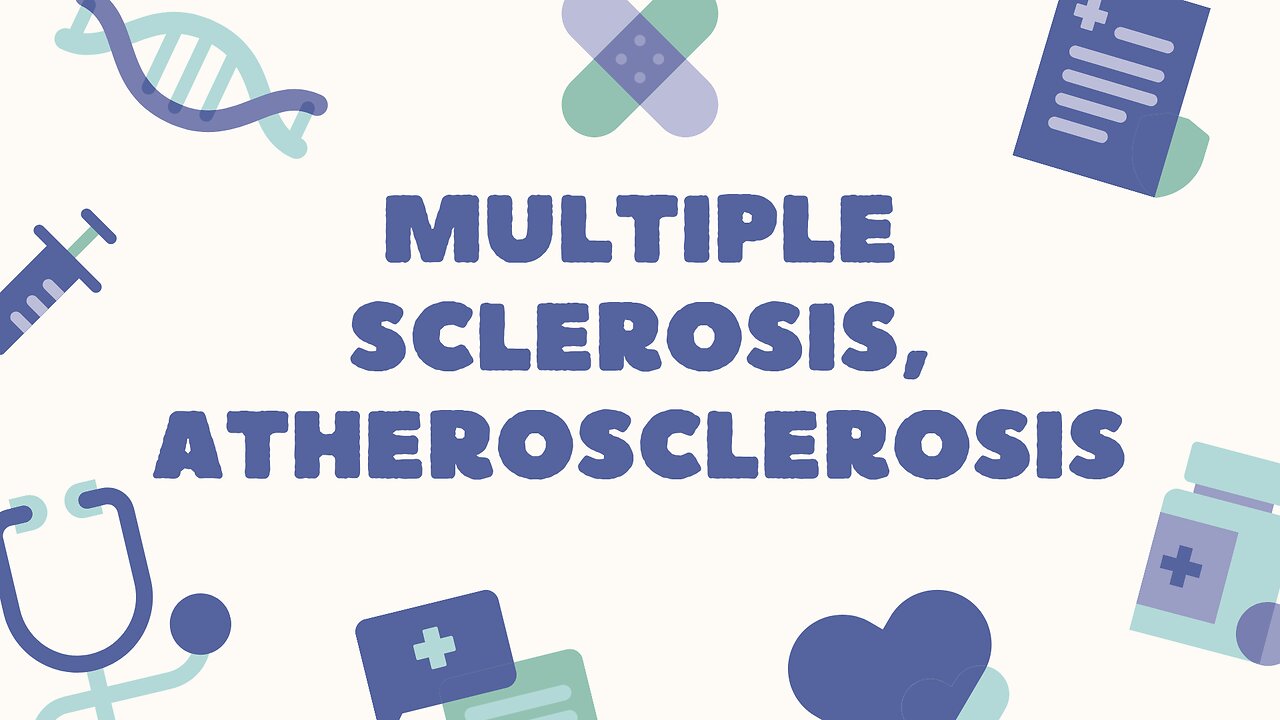Premium Only Content

dealing with multiple sclerosis & atherosclerosis
Multiple Sclerosis (MS) and Atherosclerosis are two chronic conditions that affect the body in different yet potentially interconnected ways. Multiple Sclerosis is an autoimmune disease in which the immune system attacks the protective myelin sheath surrounding nerve fibers in the brain and spinal cord, leading to impaired communication between the brain and body. Common MS symptoms include fatigue, muscle weakness, numbness, vision problems, and difficulty with balance or coordination.
Atherosclerosis, on the other hand, is a cardiovascular condition characterized by the buildup of plaque—composed of cholesterol, fats, and inflammatory substances—within arterial walls. This progressive narrowing and hardening of arteries can restrict blood flow, increasing the risk of heart attack, stroke, and peripheral artery disease.
Recent research highlights a possible link between MS and atherosclerosis, as both share underlying factors such as chronic inflammation, oxidative stress, and endothelial dysfunction. Individuals with MS may face a higher risk of vascular complications, while poor circulation from atherosclerosis can worsen neurological outcomes.
Addressing these conditions requires a comprehensive lifestyle approach, including anti-inflammatory nutrition, regular physical activity, vitamin D optimization, and stress management. Medical treatments for MS aim to slow disease progression, while therapies for atherosclerosis focus on improving cardiovascular health and reducing plaque buildup.
By understanding the connections between Multiple Sclerosis and Atherosclerosis, patients and healthcare providers can adopt preventive strategies that support brain health, nervous system function, and long-term cardiovascular wellness.
-
 LIVE
LIVE
The Charlie Kirk Show
44 minutes agoAmerica for Americans? + Operation Midway Blitz + Berkeley Aftermath | Jobob, McCoy, Schneider
3,459 watching -
 LIVE
LIVE
Side Scrollers Podcast
1 hour agoMario Galaxy Movie Trailer REACTION + Black Lesbian GOES OFF on Weiner + More | Side Scrollers
624 watching -

The Rubin Report
2 hours ago‘The View’s Sunny Hostin Tries to Shame John Fetterman Until He Puts Her in Her Place
89.8K35 -
 LIVE
LIVE
LFA TV
15 hours agoLIVE & BREAKING NEWS! | WEDNESDAY 11/12/25
4,305 watching -
 18:53
18:53
Professor Nez
1 hour agoDemocrats TURN on Chuck Schumer & BOOT HIM OUT of the Party!
7.31K5 -
 LIVE
LIVE
The Mel K Show
1 hour agoMORNINGS WITH MEL K - Dueling Narratives & Endless Distraction: Don’t Lose Focus! - 11-12-25
705 watching -
 LIVE
LIVE
The Shannon Joy Show
1 hour agoH1-B-Trayal! How Many Times Does Trump Have To Punch MAGA In The Face Before They Realize He’s Just Not That Into Them?
246 watching -
 1:56:53
1:56:53
Badlands Media
10 hours agoBadlands Daily: November 12, 2025
90.1K9 -
 43:54
43:54
VINCE
3 hours agoThomas Speciale: The Man Behind John Brennan's Meltdown | Episode 167 - 11/12/25 VINCE
73.4K111 -
 LIVE
LIVE
Nikko Ortiz
2 hours agoMILITARY FAILS AND KAREN ACTIVITIES... |Rumble Live
224 watching